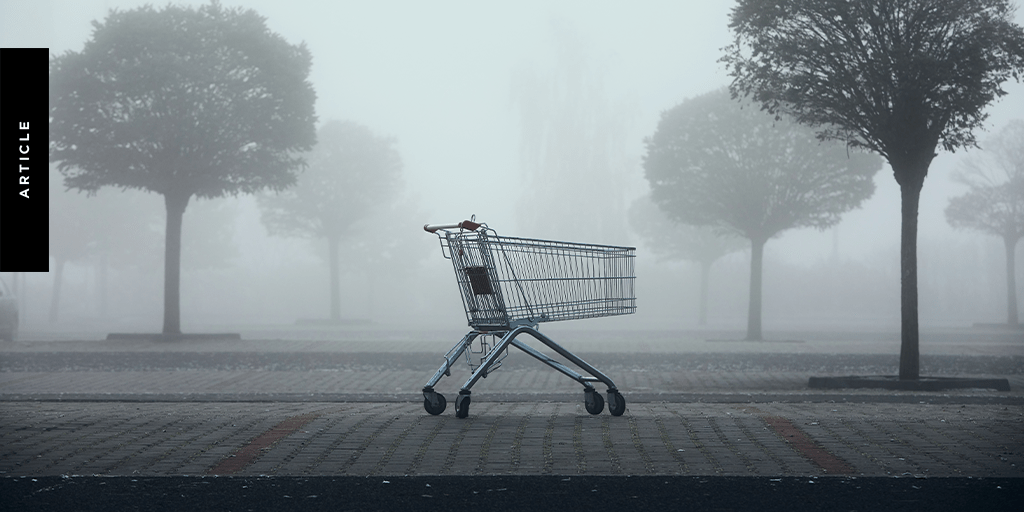
The New Year brings fresh opportunities, but for many businesses, the first quarter can feel like a sales wasteland. While it’s not typically a peak sales period, food-related spending showed modest growth during the same time last year, according to the Australian Retailers Association.
Right now, customers are focused on paying off holiday bills and returning unwanted gifts, so it’s common for SMEs to experience a slowdown in sales.
However, this post-holiday retail slump can be overcome. With the right strategies, you can regain momentum again and set the stage for a stellar year. Read on for our well-researched tips.
Why Does the Post-Holiday Slump Happen?
After the holiday rush, consumer behaviour changes dramatically from pre-Christmas spending sprees to fiscal belt tightening. Returns and exchanges often take centre stage, potentially impacting profit margins if managed poorly.
Although short-lived, this sales slowdown can significantly impact SMEs’ cashflow.

Review Past Campaigns for Insights
Your holiday sales campaigns offer a wealth of data – and valuable insights. Analysing this information can help identify what worked and what didn’t with your customers.
Here are some key questions to guide your analysis:
- Did certain channels, like email marketing or social media outperform others?
- Were particular customer segments more responsive to specific offers?
- How did timing influence the success of your campaigns?
- What do key metrics, such as click-through rates, return on ad spend and customer acquisition costs, show you about where your marketing dollars had the most impact?
By reviewing this data, you can refine your strategies and focus on what drives results. That might be optimising your email subject lines, refining ad copy or improving audience targeting. For example, maybe a particular social media post went viral. What made it a standout – perhaps the imagery, the offer or the call to action?

Prepare for Returns and Upselling Opportunities
Returns and exchanges can strain your business. But research shows they’re opportunities for improving customer satisfaction and driving sales. In fact, 91% of consumers are more likely to become long-term customers after a positive return experience. Think of these situations as a chance to impress customers with top-notch service and upsell extra products. For example, train your staff to recommend complementary items during returns or offer exclusive discounts to encourage repeat purchases.
Streamlined systems for handling returns can also boost customer satisfaction and foster loyalty, giving your business an edge during the slower months. With eight in 10 Australians stating loyalty programs enhance their experience with a brand, consider incorporating return policies with yours.
Re-Engage Existing Customers
Customers who shopped with you during the holidays are your warmest leads. Reach out to them with personalised email campaigns, loyalty offers, or social media content that keeps your brand visible. Use multiple channels to reach customers, including SMS or in-app messages, loyalty programs or emails.
For instance, targeted promotions such as ‘New Year, New Deals’ or exclusive early access to sales can encourage repeat business. Customers value personal touches, and these can convert one-time buyers into lifelong fans. Other ways to build customer retention is to answer their questions and act on their feedback promptly. Run satisfaction surveys, maybe with a lure of a discount on their next purchase as a thank you for their time.
Tackle Abandoned Carts and Encourage Impulse Buys
About 88% of Australian online shoppers have abandoned their carts before completing a purchase – that’s $18 billion in lost sales revenue left on the table. Automated reminders paired with enticing discounts can encourage customers to complete their purchases. Such reminders alone can recover up to 15% of lost sales.
To spark impulse buys, consider limited time offers or free shipping thresholds. Simplifying your checkout process also plays a big role—fewer steps mean fewer chances for customers to click away.
If those abandoned carts are due to high shipping costs or finding better prices elsewhere, consider how you can improve your offerings.

Plan for Seasonal Trends
Upcoming celebrations such as Easter could be drawcards for your SME’s sales. Creating a marketing calendar for the year can help you stay ahead of seasonal trends to prepare to engage your customers. List public holidays, season trends (EOFY sales, etc.), industry-specific days (trade shows, product launches), cultural and festive events as well as global events. Could generative artificial intelligence (AI) help whip this up for you in a nanosecond? Align your campaigns with customer needs as your customers’ behaviours shift throughout the year.
Seasonal promotions, themed campaigns, and time-sensitive offers help keep customers excited about your brand throughout the year.
Leverage Technology to Stay Competitive
Digital tools can boost your business during slower months. AI driven marketing platforms, SEO strategies, and mobile-friendly websites enhance the customer experience and keep you competitive.
Consider using AI chatbots to handle common customer queries or leveraging analytics tools to refine your campaigns. Staying tech-savvy ensures you meet customers where they are. Use AI to analyse customer data and:
- Craft highly targeted SMS, WhatsApp, or Facebook Messenger campaigns
- Deploy AI-powered chatbots for automated, two-way conversations that qualify leads and guide them through the sales funnel, and
- Use real-time analytics to measure campaign performance and optimise in the moment.

